oleh admins | Okt 13, 2020 | Advokasi Kebijakan, Kampanye Publik, Kebijakan Pengelolaan SDA yang Inklusif, Pengelolaan Pengetahuan
Recently, the Ministry of Environment and Forestry (KLHK) issued a new regulation on Customary Forests, P. 17/2020 concerning Customary Forests and Private Forests. This regulation is the implementing regulation for the administration of Customary Forests that...

oleh admins | Agu 28, 2020 | Kampanye Publik, Kebijakan Pengelolaan SDA yang Inklusif, Pengelolaan Pengetahuan, Pengorganisasian Masyarakat, Regenerasi Pengelolaan SDA, Relawan
Indigenous people have their own local wisdom in protecting the environment and managing their natural resources. BRWA (2009) states that forests located in indigenous peoples’ territories are of good quality. Seeing this, the local wisdom should be an...

oleh admins | Jul 29, 2020 | Ekonomi Kerakyatan, Kampanye Publik, Kerja RMI, Pengelolaan Pengetahuan, Program
Mungkin sebagian dari kita mengetahui bahwa dulu ada padi unggulan nasional bernama IR 64. IR 64 hanyalah salah satu dari nama-nama padi yang diluncurkan pada tahun 1986 oleh Presiden Soeharto pada tahun 1986[1]. Padi IR, padi pemerintah, padi unggul. Begitu sering...

oleh admins | Jul 9, 2020 | Kampanye Publik, Relawan
Sejak pandemi Covid-19 terjadi di Indonesia, gerakan anak muda dampingan RMI, Relawan 4 Life, aktif melakukan kegiatan sederhana dan bermanfaat, seperti Diskusi Daring (Disaring). Sebagai kegiatan yang mendukung gerakan #physicaldistancing, diskusi ini dilakukan... oleh admins | Mar 18, 2020 | Agenda, Kampanye Publik
Gelak tawa yang terselip diantara kegiatan diskusi hari itu terlihat mendominasi ruangan di Hotel Sahira, Bogor pada 9 Maret 2020. Rasa ingin tau dan semangat terlihat di wajah para peserta Pelatihan Kewirausahaan untuk Masyarakat dan Pendamping yang difasilitasi RMI...

oleh admins | Jan 25, 2020 | Kampanye Publik, Kerja RMI, Pengelolaan Pengetahuan
Terubuk liar, Desa Cibarani. Malnutrisi masih menghantui masyarakat Indonesia saat ini. Hasil Riset Kesehatan Dasar (Riskesdas) Kementerian Kesehatan 2018 menunjukkan bahwa 17,7% bayi usia di bawah 5 tahun (balita) masih mengalami masalah gizi. Angka tersebut terdiri...





